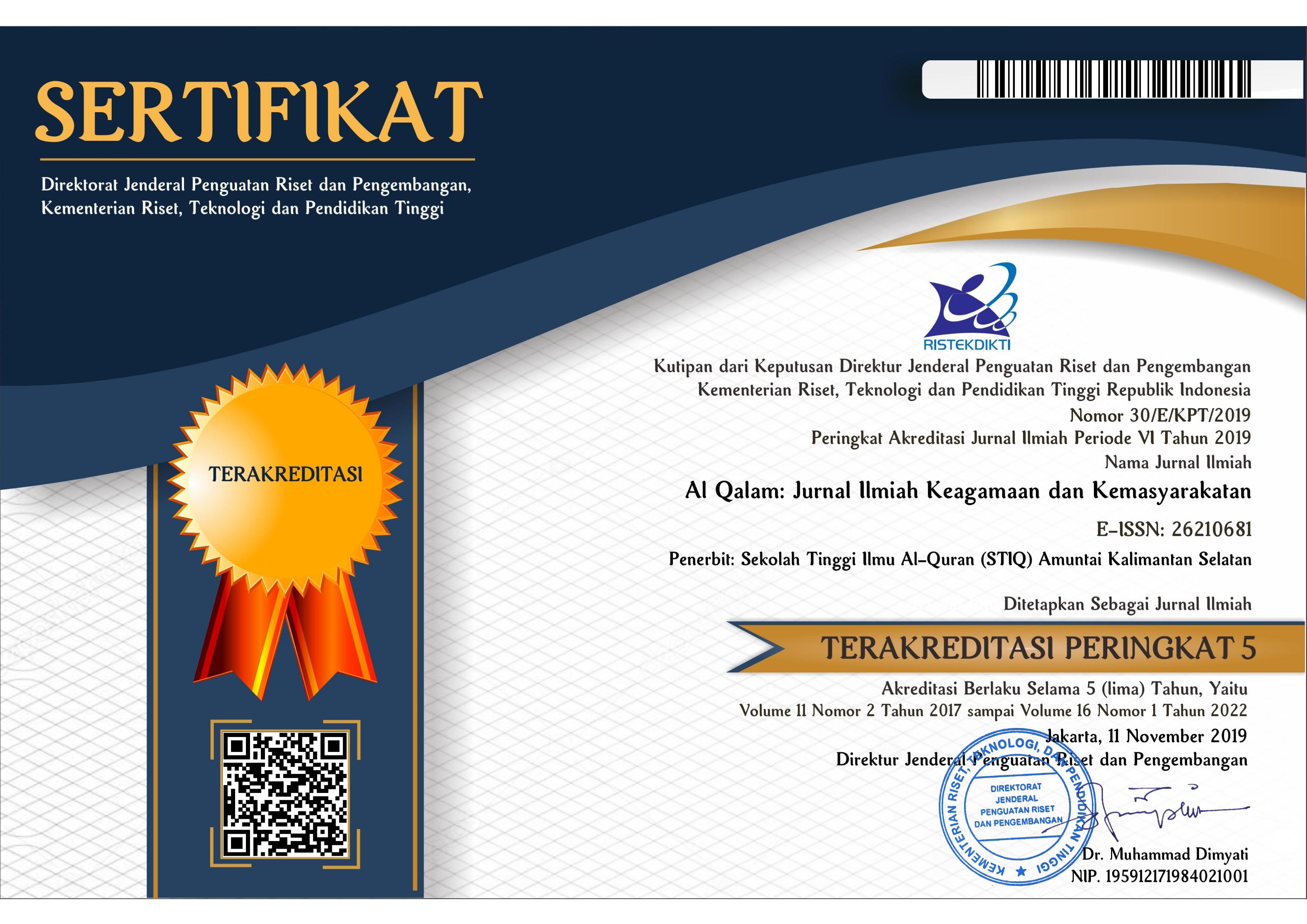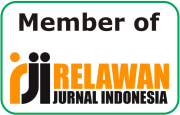Hadith on Tabarruj: Relevance and Limitations of Makeup Use for Muslim Women in the Contemporary Era
Abstract
Tabarruj, in the context of Islamic teachings, refers to the actions of women who display their beauty or private parts with the aim of attracting the attention of the opposite sex. Hadiths related to tabarruj are often used as a reference to limit the use of makeup and jewelry for Muslim women. However, along with the times and cultural changes, this issue has become increasingly relevant to discuss, especially regarding the limitations of using makeup in the contemporary era. This research aims to analyze the relevance of the hadith regarding tabarruj in the context of modern Muslim society, as well as providing views regarding the limitations of using makeup for Muslim women from an Islamic perspective. The method used is a literature review with a thematic analysis approach to hadiths related to tabarruj. The research results show that although the use of makeup is not completely prohibited, there are still limitations, namely not excessively and not aiming to attract the attention of the opposite sex beyond what is required by the Shari'a. In conclusion, Muslim women can use makeup within reasonable limits, in accordance with the principle of simplicity and not violating Islamic teachings about aurat and tabarruj. It is hoped that this research will provide insight for Muslims in understanding the relationship between religious teachings and social practices in the modern era.
Keywords
Full Text:
PDFReferences
Al-‘Asqalānī, Aḥmad bin ‘Alī bin Ḥajar. Fatḥ Al-Bārī. Edited by Amiruddin. Jakarta: Pustaka Azzam, 2008.
Al-Mubārakfūrī, Abū al-‘Ulā Muḥammad ‘Abdurraḥmān bin ‘Abdurraḥīm. Tuḥfat Al-Aḥważī Bi Syarḥ Jāmi’ Al-Tirmiżī. Beirūt: Dār al-Kutb al-‘Ilmiyah, 1993.
Al-Naisābūrī, Abū al-Ḥusain Muslim bin al-Ḥajjāj al-Qusyairi. Ṣaḥīḥ Muslim. Edited by Muḥammad Fuād ‘Abd Al-Bāqī. Kairo: Muṣṭafā al-Bābī al-Ḥalabī, 1955.
Al-Nasā’ī, Abū ‘Abdirraḥmān Aḥmad bin Syu’aib. Sunan Al-Nasā’ī. Edited by Muḥammad Riḍwān ‘Arqaswaī. Beirūt: Dār al-Risālah al-‘Ilmiyyah, 2018.
Al-Nawawī, Abū Zakariyyā Muḥyiddīn Yaḥya bin Syaraf. Al-Minhāj Syaraḥ Ṣaḥīḥ Muslim Bin Al-Ḥajjāj. Beirūt: Dār Iḥyā’ al-Turāṡ al-‘Arābī, 1976.
Al-Qurṭubī, Abū ‘Abdillāh Muḥammad bin Aḥmad al-Anṣārī. Al-Jāmi’ Li Aḥkām Al-Qur’ān. Edited by Aḥmad Al-Birdūnī and Ibrāhīm Aṭfīsy. Kairo: Dār al-Kutb al-Miṣriyyah, 1964.
Al-Tirmiżī, Muḥammad bin ‘Īsā bin Sūrah bin Mūsa bin al-Ḍaḥḥāk Abū ‘Īsa. Sunan Al-Tirmiżī. Edited by Aḥmad Muḥammad Syākir and Muḥammad Fuād ‘Abd Al-Bāqī. Mesir: Muṣṭafā al-Bābī al-Ḥalabī, 1975.
Almunadi, Almunadi, and Eko Zulfikar. “Pemahaman Hadis Tabarruj Dan Korelasinya Dengan Narsis Di Media Sosial Tik-Tok.” FiTUA: Jurnal Studi Islam 4, no. 2 (2023): 181–97. https://doi.org/10.47625/fitua.v4i2.520.
Anchieta, Natália Machado, Anthonieta Looman Mafra, Roberta Tokumori Hokama, Marco Antonio Correa Varella, Jailson de Almeida Melo, Luana Oliveira da Silva, Caio Santos Alves da Silva, and Jaroslava Varella Valentova. “Makeup and Its Application Simulation Affect Women’s Self-Perceptions.” Archives of Sexual Behavior 50, no. 8 (2021): 3777–84. https://doi.org/10.1007/s10508-021-02127-0.
Ashimi, Tijani Ahmad. “The Importance of Al- Wasatiyyah in Islamic Worldview.” International Journal of Scientific and Research Publications (IJSRP) 10, no. 11 (2020): 206–11. https://doi.org/10.29322/ijsrp.10.11.2020.p10724.
Aswar, Aswar, Azwar Iskandar, and Edil Wijaya Nur. “Grooming Konselor Muslim: Panduan Berpenampilan Dalam Kitab Asy-Syama’il Al-Muhammadiyah.” Jurnal Bimbingan Dan Konseling Islam 10, no. 1 (2020): 1–19. https://doi.org/10.29080/jbki.2020.10.1.1-19.
Azmi, Vera Nur. “Makna Tabarruj Perspektif Hadits Dalam Kitab Syarah Shahih Muslim Karya Imam An-Nawawi (631-676 H.).” Jurnal Penelitian Ilmu Ushuluddin 2, no. 2 (2022): 218–34. https://doi.org/10.15575/jpiu.v2i2.13591.
Ernawati, Tuti, Ira Suryani, and Sukiman Sukiman. “Character Education for Children: The Study on The Good and Bad Values.” Jurnal Basicedu 6, no. 2 (2022): 2199–2207. https://doi.org/10.31004/basicedu.v6i2.2350.
Habibillah, Putri Ghoida’, and Miski Miski. “Menyingkap Mitos Jahiliyyah Dalam Tafsir Digital: Simbolisasi Tabarruj Pada Q.S Al-Ahzāb Ayat 33 Dalam Meme Di Media Sosial.” Al-Bayan: Jurnal Studi Ilmu Al- Qur’an Dan Tafsir 8, no. 1 (2023): 21–28. https://doi.org/10.15575/al-bayan.v8i1.27909.
Hassan, Siti Hasnah, Shao Zhen Teo, T. Ramayah, and Nabil Hasan Al-Kumaim. “The Credibility of Social Media Beauty Gurus in Young Millennials’ Cosmetic Product Choice.” PLoS ONE 16, no. 3 (2021): 1–17. https://doi.org/10.1371/journal.pone.0249286.
Hatab, Wafa Abu. “Prophet Muhammad’s Linguistic Etiquette.” Jordan Journal of Modern Languages and Literatures 14, no. 1 (2022): 129–43. https://doi.org/10.47012/jjmll.14.1.7.
Karabulut, Feyzan, Muhammed Bilgehan Aytac, and Eyup Akin. “Makeup Consumption and Islamic Religiosity.” Human Arenas 3, no. 4 (2020): 534–51. https://doi.org/10.1007/s42087-020-00106-w.
Kaṡīr, Abū al-Fadā’ Ismā’īl bin ‘Umar bin. Tafsīr Alquran Al-‘Aẓīm. Edited by Abdul Ghoffar and Abu Ihsan Al-Atsari. Bogor: Pustaka Imam asy-Syafi’i, 2004.
Khasanah, Mahfidhatul. “Adab Berhias Muslimah Perspektif Ma’nā-Cum-Maghzā Tentang Tabarruj Dalam QS Al-Ahzab 33.” Al-Adabiya: Jurnal Kebudayaan Dan Keagamaan 16, no. 2 (2021): 171–84. https://doi.org/10.37680/adabiya.v16i2.920.
Lesnida, Lesnida. “Penggunaan Kosmetik Berbahaya Dalam Persfektif Hukum Islam.” Al-Fikru: Jurnal Ilmiah 15, no. 1 (2021): 53–64. https://doi.org/10.51672/alfikru.v15i1.41.
Ma’mur, Jamal. “Moderatisme Fikih Perempuan Yusuf Al-Qardhawi.” Muwazah 8, no. 1 (2017): 1–13. https://doi.org/10.28918/muwazah.v8i1.725.
Mafra, Anthonieta Looman, Caio S.A. Silva, Marco A.C. Varella, and Jaroslava V. Valentova. “The Contrasting Effects of Body Image and Self-Esteem in the Makeup Usage.” PLoS ONE 17, no. 3 March (2022): 1–11. https://doi.org/10.1371/journal.pone.0265197.
Mafra, Anthonieta Looman, Marco Antonio Correa Varella, Renata Pereira Defelipe, Natália Machado Anchieta, Caroline Aparecida Grecco de Almeida, and Jaroslava Varella Valentova. “Makeup Usage in Women as a Tactic to Attract Mates and Compete with Rivals.” Personality and Individual Differences 163 (2020): 110042. https://doi.org/10.1016/j.paid.2020.110042.
Mitayani, Pawestri. “Eyelash Extension Use for Muslim Women from an Islamic Law Perspective.” Nizham: Jurnal Studi Keislaman 12, no. 2 (2024): 238–47. https://doi.org/10.32332/nizham.v12i02.7043.
Shekhawat, Kalika. “The Psychological Effects of Makeup: Self Perception, Confidence and Social Interaction.” International Journal of Advanced Research 12, no. 5 (2024): 925–31. https://doi.org/10.21474/ijar01/18803.
Smith, Rosanna K, Michelle R VanDellen, and Lan Anh N Ton. “Makeup Who You Are: Self-Expression Enhances the Perceived Authenticity and Public Promotion of Beauty Work.” Journal of Consumer Research 48, no. 1 (2021): 102–22. https://doi.org/10.1093/jcr/ucaa066.
Umar, M. Hasbi, and Abrar Yusra. “Perspektif Islam Tentang Tabarruj Dalam Penafsiran Para Ulama.” Jurnal Literasiologi 3, no. 4 (2020): 74–88. https://doi.org/10.47783/literasiologi.v3i4.124.
Wati, Mirna, and Hasep Saputra. “The Concept of Tabarruj in the Quran According to Muslim Commentators.” AJIS: Academic Journal of Islamic Studies 3, no. 2 (2018): 163–90. https://doi.org/10.29240/ajis.v3i2.577.
Widuri, Rachma Tri, Rizki Ayu Budipratiwi, and Ayoedia Gita Citrayomie. “Counter Hegemony of Beauty Concept by The Body Shop Instagram Ad: A Semiotic Analysis.” Bricolage : Jurnal Magister Ilmu Komunikasi 9, no. 1 (2023): 87. https://doi.org/10.30813/bricolage.v9i1.3865.
Yusuf, M. Fajri, Bona Bargot Riezky Nagabe Siregar, and Alwi Padly Harahap. “Implementation of Hadith as a Foundation for Deradicalization in Contemporary Islamic Education Curriculum.” At-Turāṡ: Jurnal Studi Keislaman 11, no. 2 (2024): 160–77. https://doi.org/10.33650/at-turas.v11i2.9358.
Zhang, Ling, Wenfeng Chen, Menghan Liu, Yuxiao Ou, Erjia Xu, and Ping Hu. “Light Makeup Decreases Receivers’ Negative Emotional Experience.” Scientific Reports 11, no. 1 (2021): 23802. https://doi.org/10.1038/s41598-021-03129-7.
DOI: http://dx.doi.org/10.35931/aq.v19i3.4432
Refbacks
- There are currently no refbacks.
Copyright (c) 2025 Tutia Rahmi, Khairin Nazmi, Rois Hamid Siregar, Alwi Padly Harahap

This work is licensed under a Creative Commons Attribution 4.0 International License.
Al Qalam: Jurnal Ilmiah Keagamaan dan Kemasyarakatan
index by:
Publish by:
Sekolah Tinggi Ilmu Al-Qur'an Amuntai
Contact us:
Address: Jl. Rakha Pakapuran, Amuntai Utara
Kabupaten : Hulu Sungai Utara
Kode Pos : 71471
Provinsi : Kalimantan Selatan
Telephone : 085251613000
Email: hafizhihusinsungkar@gmail.com

This work is licensed under a Creative Commons Attribution 4.0 International License


